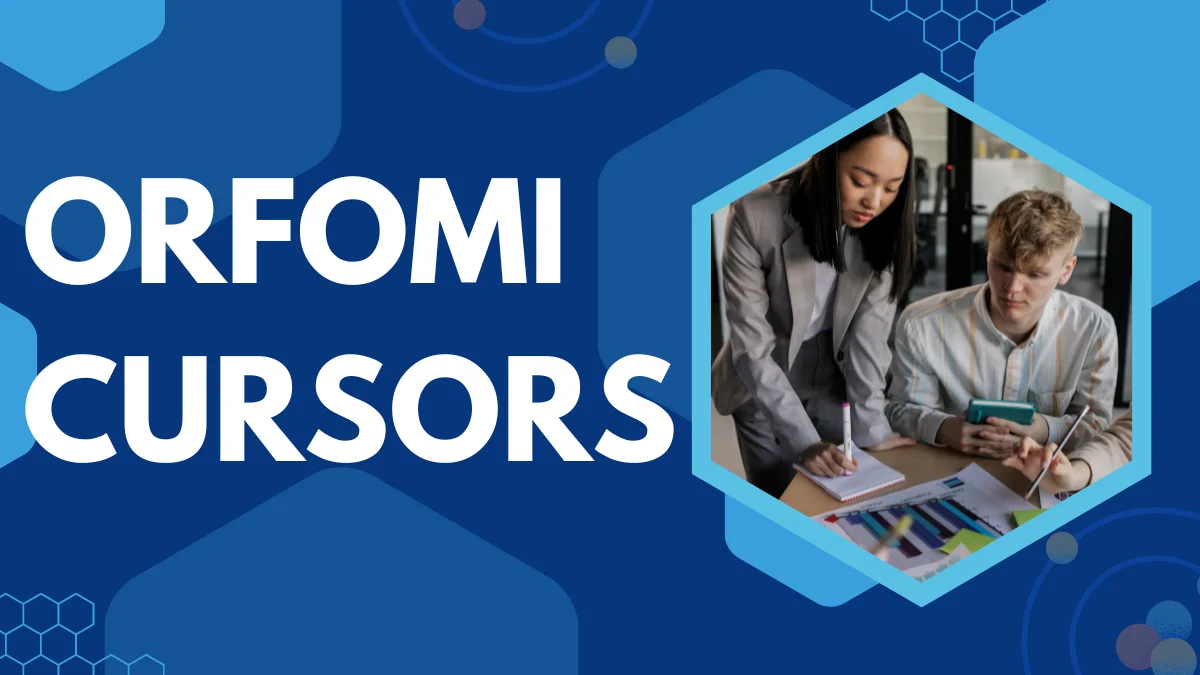
ORFOMI Cursors: A Modern Approach to Data Navigation
In today’s rapidly advancing digital landscape, handling large datasets efficiently is ORFOMI Cursors individuals and organizations. One significant tool that has emerged in database management and data handling is the ORFOMI cursor. ORFOMI stands for Object-Relational Format for Object Manipulation Interface, a term not widely known outside specific database management communities but holds significant potential in data processing.
This article delves into ORFOMIcursors—what they are, their applications, and how they compare to traditional database cursors.
What Are ORFOMI- Cursors?
Cursors in database management serve as pointers that allow traversal over records in a database query result. Traditional cursors fetch rows from a result set one at a time, providing the mechanism for row-by-row processing. ORFOMI cursors, however, go a step further by merging the flexibility of object-relational mapping (ORM) with advanced navigation and manipulation capabilities.
In the ORFOMI architecture, a cursor is used to navigate through both relational and non-relational data structures with ease. These cursors enable users to manipulate objects directly within the dataset, providing a more seamless and interactive approach to data management.
Key Features of ORFOMI- Cursors
- Object-Relational Integration: ORFOMIcursors allow users to work with both object-oriented and relational data. This integration streamlines the handling of complex data models, where objects have relationships across various entities in the database.
- Efficient Data Navigation: ORFOMI cursors are optimized for speed and performance, offering enhanced methods to traverse large datasets, including support for hierarchical data structures. This makes them ideal for applications involving complex, nested data queries.
- Advanced Object Manipulation: Unlike traditional SQL cursors that are limited to relational data operations, ORFOMIcursors allow for manipulation of data as objects. This includes actions like inserting, updating, and deleting not just rows, but also entire object structures.
- Concurrency and Transactions: ORFOMI-cursors are built to support modern database environments, which involve high levels of concurrency. They can handle multiple transactions simultaneously, ensuring data consistency and preventing conflicts in multi-user environments.
- Extensibility: ORFOMI-cursors are designed to be extensible, allowing database administrators and developers to customize their behavior based on the specific needs of their applications.
Applications of ORFOMI -Cursors
- Big Data Analytics: Given their ability to navigate complex datasets, ORFOMI cursors are particularly suited for big data applications. Their capacity to traverse hierarchical structures makes them ideal for use in analytics platforms where complex querying is required.
- Object-Relational Databases (ORDBMS): ORFOMI cursors work seamlessly with ORDBMS systems that store data as objects rather than in traditional tabular formats. This enhances the user experience by simplifying the management and interaction with object-based data.
- Data Warehousing: In data warehouses, where the integration of diverse data sources and types is common, ORFOMI -cursors simplify data retrieval, making the process more efficient and reducing the time needed for reporting and analytics.
- Real-Time Data Applications: For real-time data applications such as financial services and monitoring systems, ORFOMI -cursors allow quick access and manipulation of live data without significant overhead.
Comparison to Traditional Cursors
Traditional database cursors serve their purpose well, but they often struggle when tasked with handling complex or non-relational data structures. ORFOMIcursors extend the traditional cursor model by incorporating object manipulation, which provides greater flexibility and control over the data.
Here’s a quick comparison between traditional cursors and ORFOMI cursors:
The Future of ORFOMI- Cursors
As the digital world continues to generate massive volumes of data, tools like ORFOMI cursors are becoming increasingly essential for organizations that need to manage both relational and non-relational data efficiently. As ORDBMS systems grow in popularity and object-relational data models become more common, we can expect ORFOMI cursors to play a pivotal role in future database technologies.
Their extensibility, combined with their advanced data navigation features, makes them a versatile tool for developers and database administrators alike.
Conclusion
ORFOMI- cursors represent a modern solution to the challenges posed by complex, object-oriented data environments. Their ability to handle both relational and non-relational data, coupled with their performance advantages, makes them a valuable tool for organizations working with large datasets. As data continues to grow in both volume and complexity, ORFOMI- cursors are likely to see increasing adoption across industries, providing enhanced flexibility, performance, and control in database management systems.
FAQs
Q1: How do ORFOMI- Cursors differ from traditional SQL cursors?
ORFOMI- Cursors differ in their ability to handle both relational and object-oriented data. Traditional SQL cursors only work with rows and columns from relational databases, while ORFOMI- Cursors enable manipulation of complex objects and nested data structures. They are also optimized for higher performance in environments with large data sets or hierarchical models.
Q2: Are ORFOMI- Cursors specific to any database system?
ORFOMI -Cursors are typically found in Object-Relational Database Management Systems (ORDBMS). These systems integrate object-oriented programming concepts with traditional relational database management, making them ideal for handling complex data types. While not exclusive to a particular vendor, their implementation may vary across different ORDBMS platforms.
Q3: Can ORFOMI -Cursors be used with big data technologies like Hadoop?
While ORFOMI- Cursors are primarily designed for use in ORDBMS environments, they can be adapted to integrate with big data ecosystems. In scenarios where object-relational databases are used alongside Hadoop or other big data platforms, ORFOMI- Cursors provide an efficient way to navigate and manipulate large datasets.
Q4: How do ORFOMI- Cursors handle concurrency and transactions?
ORFOMI -Cursors are designed to support multiple concurrent transactions. This feature ensures that in multi-user environments, data remains consistent and transaction conflicts are minimized. ORFOMI- Cursors typically include built-in mechanisms to lock data when it is being accessed by multiple processes, ensuring that operations like updates and deletions are handled correctly.
Q5: What kind of data types can be manipulated with ORFOMI- Cursors?
ORFOMI- Cursors can handle a wide range of data types, including:
- Relational Data: Rows and columns in traditional databases.
- Object Data: Complex objects, which may include nested structures, hierarchical data, and arrays.
- Hybrid Data: Combinations of relational and object data, which are becoming increasingly common in modern applications.
Q6: Are ORFOMI- Cursors suitable for real-time data applications?
Yes, ORFOMI- Cursors are highly suitable for real-time data applications. Their ability to quickly retrieve and manipulate complex objects allows for efficient processing in systems where data changes frequently, such as financial systems, monitoring tools, and IoT-based applications.



One thought on “ORFOMI Cursors: A Modern Approach to Data Navigation”